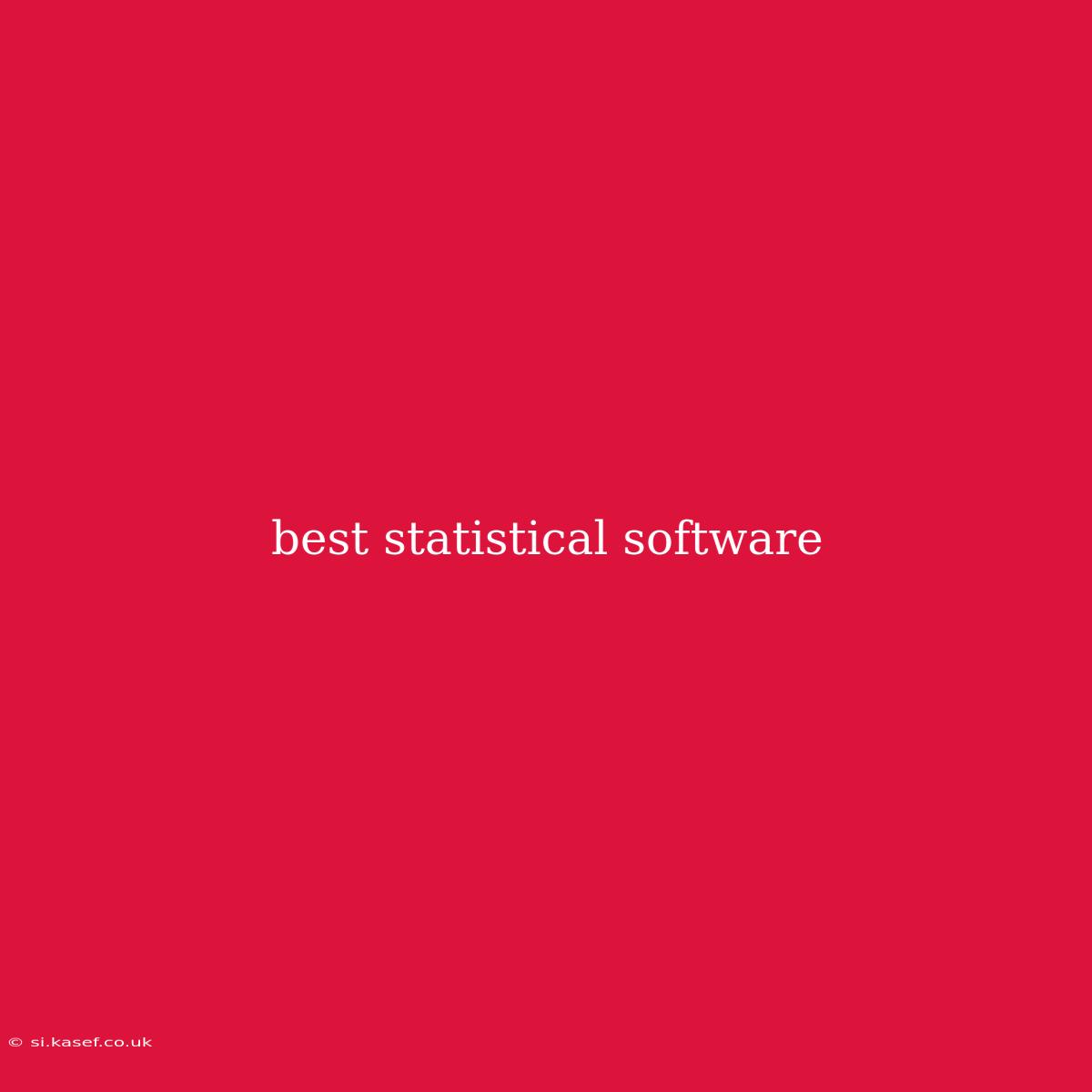The Best Statistical Software: A Comprehensive Guide
Statistical software is an essential tool for researchers, data scientists, and analysts who need to analyze data, create visualizations, and draw conclusions. With a wide array of options available, choosing the right software can be overwhelming. This comprehensive guide will explore some of the best statistical software for various needs, highlighting their strengths and weaknesses.
Factors to Consider When Choosing Statistical Software
Before diving into specific options, it's important to consider the following factors:
- Your budget: Some statistical software packages are free, while others require paid licenses.
- Your technical skills: Certain programs require a higher level of coding proficiency than others.
- The type of analysis you need to perform: Different software packages are better suited for different types of analysis.
- Ease of use: Some programs are more user-friendly than others, especially for beginners.
Top Statistical Software Options
Here is a breakdown of some of the most popular statistical software options, categorized by their key features and target users:
1. For Comprehensive Statistical Analysis & Data Visualization:
- R: This open-source language and environment is widely used in academia and industry for its powerful statistical capabilities and vast community support.
- Strengths: Free, highly flexible, extensive libraries for various statistical analyses, excellent visualization capabilities.
- Weaknesses: Can have a steeper learning curve, requires coding knowledge, less user-friendly interface.
- SAS: A powerful statistical package widely used in businesses and research institutions for its advanced analytical capabilities and reliability.
- Strengths: Powerful statistical functions, robust data management, high-quality reporting features.
- Weaknesses: Can be expensive, requires training and technical expertise, less user-friendly than some alternatives.
- SPSS: A popular statistical package known for its user-friendly interface and its suitability for both beginners and advanced users.
- Strengths: Intuitive interface, easy to use for various statistical tests, comprehensive data management features.
- Weaknesses: Can be expensive, limited customization options compared to R.
2. For User-Friendly Data Analysis & Visualization:
- JASP: A free and open-source alternative to SPSS, offering a user-friendly interface and a wide range of statistical tests.
- Strengths: Free, intuitive interface, supports various statistical tests, good for beginners.
- Weaknesses: Limited customization options compared to R or SAS.
- Python with Libraries: This versatile programming language offers numerous libraries for data analysis, such as Pandas, NumPy, and Scikit-learn.
- Strengths: Flexible, powerful, excellent for machine learning, wide community support.
- Weaknesses: Requires coding knowledge, learning curve can be steep.
- Stata: A statistical package that focuses on both statistical analysis and data management, offering a user-friendly interface and powerful analytical tools.
- Strengths: User-friendly, strong data management features, comprehensive set of statistical tests.
- Weaknesses: Can be expensive, less popular than R or SPSS.
3. For Specialized Applications:
- MATLAB: A powerful software package often used in engineering, science, and finance for its advanced mathematical and statistical capabilities.
- Strengths: Excellent for complex calculations, powerful graphics and visualization tools, widely used in STEM fields.
- Weaknesses: Can be expensive, requires a steep learning curve.
- JMP: A statistical discovery software designed for exploratory data analysis, focusing on visualization and interaction with data.
- Strengths: User-friendly interface, excellent visualization tools, strong data exploration capabilities.
- Weaknesses: Limited statistical capabilities compared to R or SAS, can be expensive.
Choosing the Best Software for You
Ultimately, the best statistical software for you depends on your specific needs and requirements. It's important to consider the following factors:
- Your budget: Free software options like R or JASP can be ideal if you have limited funds.
- Your technical skills: If you are a beginner, a user-friendly program like SPSS or JASP might be more suitable.
- The type of analysis you need to perform: Choose software that supports the specific statistical tests you need.
- Your data size and complexity: Some software packages are better suited for large or complex datasets than others.
By carefully considering these factors, you can select the best statistical software to meet your needs and empower your data analysis journey.

